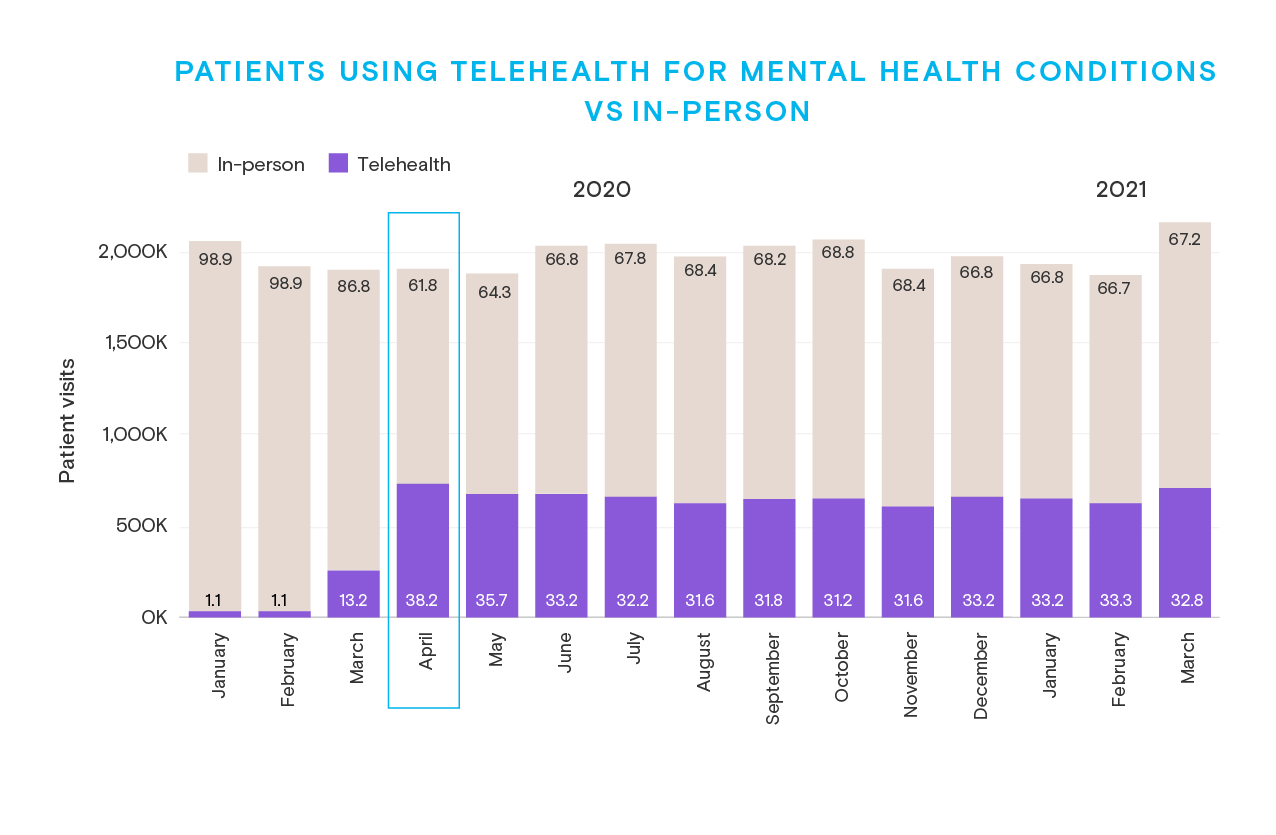Telehealth Triumph: Navigating Pandemic Healthcare

Introduction
The intersection of technology and healthcare has witnessed a paradigm shift, especially during the pandemic, with the widespread adoption of telehealth services. This article explores how telehealth has emerged as a transformative force in navigating healthcare challenges during the pandemic, emphasizing its impact on accessibility, convenience, and the overall healthcare landscape.
Rise of Telehealth in Pandemic Era
Telehealth services experienced unprecedented growth during the pandemic, becoming a cornerstone of healthcare delivery. The imperative to maintain social distancing and reduce the risk of virus transmission prompted healthcare providers to rapidly implement and expand telehealth solutions. This surge marked a significant shift in how individuals access and receive medical care.
Accessibility and Reach
One of the key advantages of telehealth services in the pandemic era is the enhanced accessibility it offers. Patients, regardless of their geographical location, gained the ability to consult with healthcare professionals remotely. This is particularly vital in situations where physical visits may pose health risks or when individuals are situated in remote areas with limited access to healthcare facilities.
Convenience for Patients
Telehealth services have redefined the patient experience by providing unparalleled convenience. Patients can now connect with healthcare providers from the comfort of their homes, eliminating the need for travel and reducing waiting times. This not only enhances patient satisfaction but also encourages individuals to seek timely medical advice without the logistical challenges of in-person visits.
Continuity of Care
During the pandemic, ensuring the continuity of healthcare services became paramount. Telehealth emerged as a critical tool in maintaining the provision of essential medical care while minimizing disruptions. Patients with chronic conditions, in need of regular check-ups, or requiring ongoing care found telehealth to be a lifeline, ensuring they could receive necessary medical attention without interruptions.
Remote Monitoring and Chronic Disease Management
Telehealth services extend beyond virtual consultations, encompassing remote monitoring solutions. Wearable devices and home monitoring kits enable healthcare providers to remotely track patients’ vital signs and manage chronic conditions. This proactive approach not only improves patient outcomes but also reduces the burden on healthcare facilities.
Mental Health Support Through Telehealth
The pandemic’s impact on mental health prompted an increased demand for mental health services. Telehealth played a pivotal role in delivering mental health support, offering virtual therapy sessions, counseling, and psychiatric consultations. This accessibility to mental health resources proved invaluable in addressing the psychological challenges induced by the pandemic.
Telehealth’s Role in Preventive Care
Telehealth services have also contributed to advancing preventive care initiatives. Routine check-ups, preventive screenings, and health education programs are now accessible through virtual channels. This proactive approach to healthcare empowers individuals to prioritize preventive measures, fostering a culture of wellness even in the midst of a pandemic.
Challenges and Considerations
While telehealth has shown remarkable benefits, challenges and considerations persist. Issues related to digital literacy, equitable access to technology, and the need for standardized regulations are areas that require attention. Addressing these challenges will be crucial in maximizing the potential of telehealth services and ensuring inclusivity.
Technological Advancements and Future Prospects
The success of telehealth services during the pandemic has spurred ongoing technological advancements. Innovations such as artificial intelligence, remote diagnostics, and virtual reality integration hold promise for the future of telehealth. These developments signal a transformative trajectory for healthcare delivery, enhancing diagnostic capabilities and patient engagement.
Conclusion with Link
In conclusion, telehealth services have emerged as a linchpin in navigating healthcare challenges during the pandemic. For further insights into the transformative impact of telehealth and its role in shaping the future of healthcare, visit The Healthy Consumer website. Explore resources that delve into the evolving landscape of telehealth and its continued influence on healthcare accessibility and delivery.
Revolutionizing Healthcare: Telehealth Solutions Amid Pandemic

The Evolution of Healthcare: Telehealth Solutions Amid Pandemic Challenges
The COVID-19 pandemic has accelerated the adoption of telehealth solutions, revolutionizing the way healthcare services are delivered. As the world navigates through unprecedented challenges, telehealth has emerged as a critical tool, offering innovative solutions to ensure the continuity and accessibility of healthcare services.
Rise of Telehealth during the Pandemic:
The pandemic prompted a rapid shift towards telehealth solutions, driven by the need to provide medical care while minimizing in-person interactions. Telehealth encompasses a range of services, including virtual consultations, remote monitoring, and digital communication tools. This surge in telehealth adoption has not only addressed immediate concerns but has also set the stage for a transformative future in healthcare delivery.
Accessibility and Overcoming Geographic Barriers:
One of the key advantages of telehealth is its ability to overcome geographic barriers. Patients in remote or underserved areas can now access healthcare services without the need for extensive travel. Telehealth solutions have brought medical expertise to the fingertips of individuals, fostering a more inclusive and accessible healthcare system.
Virtual Consultations and Remote Monitoring:
Telehealth solutions have redefined the patient-doctor relationship with the widespread adoption of virtual consultations. Patients can seek medical advice, discuss symptoms, and receive prescriptions from the comfort of their homes. Remote monitoring tools enable healthcare professionals to track patients’ vital signs and chronic conditions, allowing for timely interventions and personalized care plans.
Enhanced Healthcare Efficiency:
The integration of telehealth solutions has streamlined healthcare processes, leading to increased efficiency. Digital health records, virtual appointments, and online prescription services have reduced administrative burdens, allowing healthcare providers to focus more on patient care. This efficiency not only benefits healthcare professionals but also contributes to a more responsive and patient-centric healthcare system.
Telehealth Solutions Pandemic: Transforming Patient Experience
To explore the transformative impact of telehealth solutions during the pandemic, visit Telehealth Solutions Pandemic for valuable insights and resources.
Technological Innovations in Telehealth:
Advancements in technology have played a crucial role in the evolution of telehealth solutions. The integration of artificial intelligence (AI), wearable devices, and telemedicine apps has enhanced the diagnostic capabilities and personalized treatment options. These technological innovations contribute to a more comprehensive and proactive approach to healthcare.
Challenges and Regulatory Considerations:
While telehealth solutions offer numerous benefits, they also come with challenges and regulatory considerations. Issues such as data security, licensure requirements, and reimbursement policies need careful attention. Addressing these challenges is essential to ensure the widespread and sustainable integration of telehealth into the broader healthcare landscape.
Patient Empowerment and Health Literacy:
Telehealth empowers patients by providing them with greater control over their healthcare journey. Increased health literacy, facilitated by access to information and virtual resources, enables individuals to make informed decisions about their well-being. Telehealth solutions contribute to a paradigm shift, where patients become active participants in their healthcare management.
Sustainable Healthcare for the Future:
As telehealth solutions continue to evolve, they are poised to become an integral part of the future healthcare landscape. The lessons learned during the pandemic highlight the importance of flexible and resilient healthcare systems. Telehealth is not just a temporary response to a crisis but a sustainable solution that can enhance healthcare accessibility, efficiency, and patient outcomes in the long run.
Conclusion:
The integration of telehealth solutions into mainstream healthcare practices marks a significant milestone in the evolution of medical services. From virtual consultations to technological innovations, telehealth has proven its ability to transform patient experiences, enhance healthcare efficiency, and contribute to a more accessible and patient-centric healthcare system. As the world embraces the future of healthcare, telehealth solutions stand as a beacon of innovation and resilience in the face of ongoing challenges.





